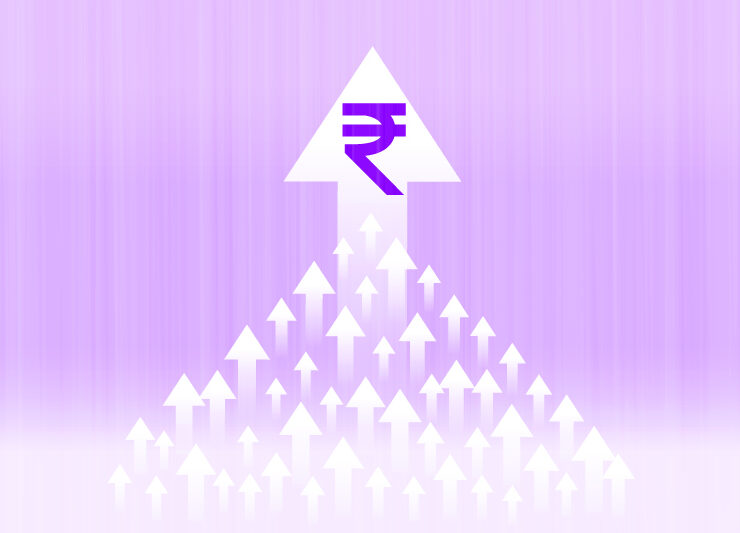Sensex Posts its Worst Weekly Fall in 5 Months: Weekly Market Wrap-Up 1-Oct

Sensex Worst Weekly Fall in 5 Months
After ending last week on record highs, the Indian stock markets had a dismal performance this week, weighed down by global and domestic factors. Meanwhile, China’s troubles continue with the newest issue of its blackouts. Is this stock market fall going to be your trigger to start investing more in stocks or book profits?
📉Indian Equity Markets Post Their Worst Weekly Fall in 5-Months
Global stock markets were under pressure due to the spread of the contagious delta variant of COVID-19, surging long-term U.S. bond yields, a strong dollar, and a spike in prices of crude oil and natural gas. The looming Evergrande crisis and widening power shortage in China also left the markets in a tizzy.
The markets closed the week ending 1st October 2021 on a negative note, recording its worst weekly fall in 5 months. Sensex closed the week at 58,765 down 2.05% and Nifty at 17,532 down 1.80%. Despite the weak performance, sectoral indices including Nifty PSU Bank (6.07%), Nifty Metal (2.56%), Nifty Pharma (2.09%), and Nifty Auto (1.61%) managed to close the week on a positive note. The Bank Nifty (-1.6%), Nifty FMCG (-1.68%), and Nifty IT (-6.26%), however, ended the week in the red.
Among the Nifty stocks, Coal India was the top gainer at 22% followed by NTPC which rose 15%. NTPC won 1.9 gigawatts (GW) in the auction of CPSU Scheme-II, Tranche-III of 5 GW. On the losing side, Tech Mahindra made the biggest fall after its stock price fell 9.50%, followed by Asian Paints which was down 7.90% weighed down by increasing crude oil prices.
So how do markets look in the coming week?
Technically speaking, some consolidation is on the cards this week. If Nifty trades above 17,565 in the upcoming trading sessions then it can move towards 17,650-17,750. On the downside, 17,400 is the support level. If Nifty falls below 17,400 then you can expect a correction up to 17,220-17050 levels.
📈 Rise in Coal Prices Sends Stocks of Coal India, NTPC and Power Grid Surging Through the Roof
Black coal turned into gold this week when a rise in its price sent stock prices of companies like Coal India, NTPC, and Power Grid rocketing anywhere between 15-22%. Yes, you read that right! While all the companies have seen a meteoric rise in stock prices, the biggest gainer has been Coal India’s share which has seen a massive weekly gain of 22% hitting an all-time of ₹195.8 on the BSE on 29th September.
What led to the jump in its share price?
To begin with, Coal India is a dominant player in India’s coal mining sector and contributes about 80% of the domestic coal output. Secondly, coal is one of the most- sought-after resources in the power and steel sector steel and accounts for 55% of India’s energy production. Furthermore, in sync with the Power Ministry’s Vision 2024 document for the coal sector, the company has already figured its plans to produce 1-billion-ton coal for FY 23-24 to meet the country’s energy needs.
Lastly, the company reported a 52.5% jump in its net profit for the first quarter of FY 22 at ₹3,174 crores, in comparison to a profit of ₹2,080 crores for the same period last year. These reasons cumulatively make the company a giant in its right, leading to the share prices surging to a 52-week high of ₹195.8 on the BSE.
⚡What’s Causing China’s Power Crisis and Electricity Cuts?
China is known for its innovation and efficiency world-over and makes just the right amount of noise over it! However, these days the South Asian country seems to be making news for the utmost wrong reasons. First, the collapse of the Evergrande group, and now the country is experiencing power cuts in its south and north-eastern industrial hubs, impacting businesses and leaving millions of Chinese citizens in darkness.
The power crisis has pre-dominantly gripped 4 provinces – Guangdong, Heilongjiang, Jilin, and Liaoning.
What’s causing the power cuts? China has promised to be carbon neutral by 2060 and has reduced its coal production by half. However, it depends upon coal-generated energy for powering its citizens’ homes. Secondly, with the increase of production of commercial goods after the lockdowns ceased world-over, there has been a sharp rise in electricity consumption of industrial units. Thirdly, while coal prices increased by 30% in over a year’s time, the Chinese government refused to re-work electricity prices. This resulted in coal-fired power plants reducing their electricity output, all of which have resulted in the present energy crisis.
Financial Impact: The industries which have been the hardest hit are – steel, cement, aluminium, and fertilizer manufacturing. The power crisis has hit the country’s economy significantly with industrial production declining by 44% as per online reports, with the economy shrinking to 7.8% from the earlier projections of 8.2% for this year.
Overall, this crisis looks to dent not only China’s economic prospects but also global imports, considering China’s global dominance in the manufacturing sector.
📺 Quick Bites
- S&P Global retains India’s growth projection rate at 9.5% for FY22, factoring in an increase in economic activity following the slowdown of the second wave. The rating agency, however, cut China’s projected growth rate for FY 22 by 30 bps to 8% over fears of economic uncertainty caused by the Evergrande crisis.
- The gross GST revenue collected in the month of September 2021 stood at ₹1,17,010 crore, up by 23% year on year.
- Oil prices rise above $80 a barrel for the first time in 3 years, sparking concerns over economic growth basis the energy crunch.
- Tata Sons wins bid for debt-ridden Air India, which was nationalised in 1953. According to a Reuters report, the government was losing ₹20 crores every day to run Air India. The national carrier has suffered losses every year since its merger with Indian Airlines in 2007-08 and has accumulated losses to the tune of ₹70,820 crore till 31 March 2020.
- HDFC Bank to double its rural reach to 2 lakh villages in a span of 2 years; the bank plans to hire 2500 people in 6 months.
- HDFC Bank issues a record 4 lakh credit cards in a month, post lifting of RBI Ban on its credit cards.
- Power Grid receives shareholder approval to raise up to ₹6,000 crores via shares or debentures on a private placement basis.
- CRISIL upgrades the long-term rating of Bharti Airtel’s bank facilities and debt programmes to AA+ from AA over stability assurance.
- DGCA extends the ban on scheduled international commercial flights until October 31’2021
- Sun Pharma announced the launch of a new cough syrup Chericof 12 in India, which provides cough relief for up to 12 months.
- RBI imposes a ₹2 crore penalty upon RBL Bank for violating banking regulations as well as non-compliance over certain regulatory directives.
- Bharat Forge’s aerospace division creates history by becoming the first Indian organization to receive Nadcap accreditation for high-quality standards of metallic materials manufacturing.
- Piramal Enterprises acquired Dewan Housing Finance Corporation (DHFL) at a total consideration of ₹35,250. Piramal’s stock price took a hit and fell 1.45% on Wednesday after this announcement.
- China declares all cryptocurrency transactions illegal, causing a $2,000 down in Bitcoin’s value.
🔌♻️ EV and Sustainability Corner
- Adani Renewable Energy (MH), a wholly-owned subsidiary of Adani Green Energy, has acquired a 40 MW operating solar project in Odisha. The company signed definitive agreements with Essel Green Energy to acquire 100 per cent economic value in an SPV that owns this solar project.
- Maharashtra government signed a MoU with Causis E-Mobility Pvt. Ltd., a JV of U.K.-based Causis Group, for the setting up of a zero-emission electric vehicle (EV) manufacturing facility at Talegaon, near Pune, with an investment of ₹2,800 crore.
- London-based bp has made its first direct investment in India, investing ~₹97 crore in Delhi-based integrated EV ride-hailing and charging company BluSmart. BluSmart will use the capital to expand its fleet of electric vehicles (EVs) to five new cities in India in the next two years
- Now did you hear that Rolls Royce will start the sale of its first all-electric vehicle Rolls-Royce Spectre in the last quarter 2023?
🚀 IPO Corner
- Paras Defence and Space Technologies had a bumper listing on Friday as the company listed at ₹475, on Friday, making a gain of 171% against its issue price of ₹175.
- Oyo files for ₹8,430 crore IPO that will be a fresh equity issue to the tune of approx ₹7,000 crore while the rest would be an offer for sale (OFS) by existing shareholders. The loss-making hotel rooms aggregator joins some of the other top-tier Indian startups such as Paytm, PolicyBazaar, and Nykaa that have also filed for IPOs in recent weeks.
- Pune-based facility management major BVG India Ltd, which is backed by UK private equity major 3i Group, has filed for IPO that will be a fresh equity issue of ₹200 crores and an OFS. BVG is one of the largest integrated services companies, having a 6.4% domestic market share and offers a wide range of services including soft services such as mechanized housekeeping, industrial housekeeping, manpower supply, security services and janitorial services, hard services. It also provides beach development and cleaning services and also undertakes the operation and maintenance of buses including electric buses.








